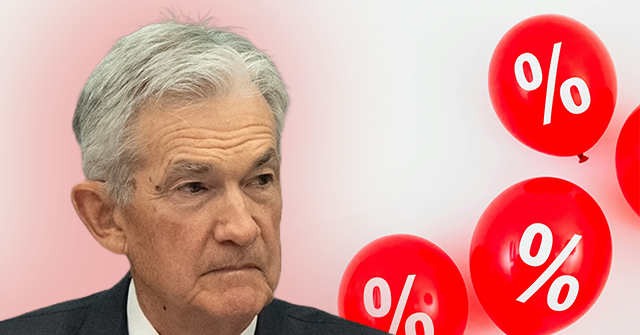Every Dog Has Its Day, Even Economists
The economists are probably right and the market is probably wrong when it comes to forecasting the Fed’s interest rate policy over the remainder of this year.
Trust us when we say that it pains us much more to write that sentence than it does for you to read it. We share your skepticism of the professional judgment of economists, especially since the consensus among economists about inflation in 2021, Fed policy in 2022, and the likelihood of a recession in 2023 was so far off the mark.
As the saying goes, every dog has its day. And this time the economists appear to be barking up the right tree when they predict that the Fed will move interest rates downward at a modest pace.
The result of a Bloomberg News survey released on Friday indicate the four-fifths of 51 economists in its survey expect the Fed to cut interest rates by just one-quarter of a percentage point at the September Fed meeting. The median forecast shows just 10 percent odds for an inter-meeting cut this month.
Investors see a much greater chance of a more aggressive Fed. Earlier this week, the futures market was pricing in nearly an 80 percent chance of either a 50 basis point cut in September or a 25 basis point inter-meeting cut in August followed by another 25 basis point cut in September. Those expectations have been tempered as the stock market panic of Monday has subsided, but the market is still pricing in around a 50 percent chance that the target rate will be 50 basis points lower than today after the Fed’s next scheduled meeting.
Absent an unforeseen economic catastrophe, a financial crisis, a natural or public health disaster, or a sudden and significant escalation of the wars in the Middle East or Ukraine that have broken out under the watch of the Biden-Harris administration, an inter-meeting cut would be unprecedented. Historically, the Fed only cuts between meetings in an emergency situation or a severe market malfunction. An orderly sell-off in stocks or a climb in unemployment does not qualify.
The Fed Should Proceed Cautiously Around the Election
If anything, the bar for an inter-meeting hike is probably even higher now than it has been in the past because the inflation picture remains uncertain. Inflation has come down for a few months now, but that happened last year also, only to reverse at the start of this year. The Fed wants to avoid any moves that could be seen as re-energizing inflationary forces.
The looming election may also give the Fed pause. While the softness in the July jobs report has probably created enough political space for the Fed to cut in September without looking overly political—we expect there will still be backlash but not as much as it would if the Fed was cutting into an obviously strong labor market—the uncertainty around federal policies following the election should give the Fed reason to move cautiously.
A Democrat sweep in November is unlikely; but if that were to come to pass, the resulting policy mix would almost certainly be inflationary. We would expect triumphant Democrats to implement an escalation of climate change regulation, fossil fuel repression, and Green New Deal spending, all of which are inflationary.
Even if the Democrat tax hikes succeeded in raising as much revenue as they claim—tax rate increases typically underperform the projections of their advocates—they are unlikely to be disinflationary. In the first place, Democrats would likely attempt to spend the additional revenue rather than dedicate it to deficit reduction.
More importantly, the tax increases they are pushing will do nothing to reduce inflation even if they did manage to reduce the budget deficit. More likely, they’ll exacerbate inflation. Higher income tax rates on the wealthy do not reduce consumer demand for the simple reason that much of the taxes were not going to be spent on consumption goods. But they do reduce investment, which reduces economic output. Similarly, raising corporate taxes may add funds to government coffers but will do little to reduce inflationary pressures. Instead, by reducing the incentives to increasing output, they constrict supply, increasing inflationary pressure.
While many analysts and media stories have portrayed Donald Trump’s policy ideas as potentially inflationary, we see it quite the opposite. Increased incentives for investment in the form of tax cuts tend to boost output. Contrary to the liturgy of the global trade mandarins, tariffs are disinflationary. Trump has been tasking his economic advisers with finding ways to reduce the deficit through cuts in domestic discretionary spending, which would also have a disinflationary effect.
Until the Fed has a better view of which way the political winds are blowing, it is far safe to cut slowly and deliberately.
Slower for Longer
Looking out further, the 51 economists surveyed by Bloomberg see a total of 75 basis points of cuts by the end of the year, which works out to a quarter-point cut at each of the three remaining Fed meetings. The market is pricing in around 100 basis points, with a strong chance of 125 basis points, which would bring the fed funds target range from 5.25 to 5.50 percent down to 4.00 percent to 4.25 percent.
Both are probably an overestimation of the size of Fed cuts this year. We now expect a Fed cut in September followed by a second in December, with the Fed skipping the November meeting that occurs over the two days after election day. November is likely to be a volatile time socially, politically, and for markets, which augurs for the Fed taking a wait-and-see approach.
